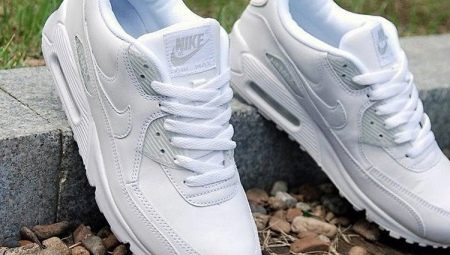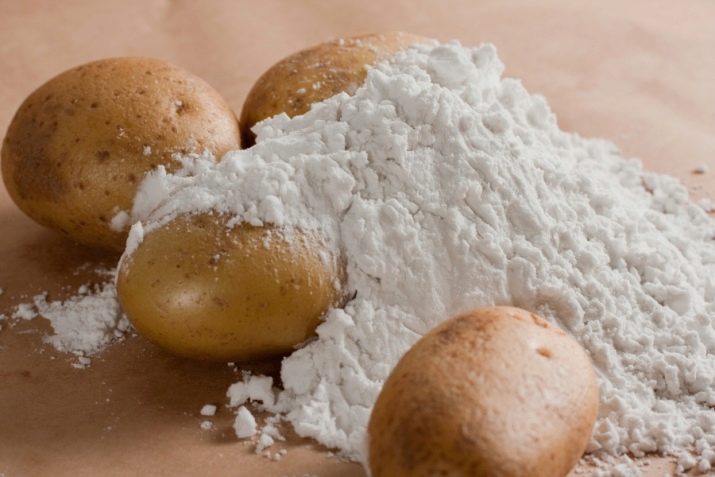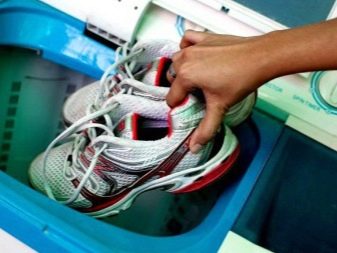We wash sneakers correctly and carefully

Sneakers are very comfortable, versatile and durable footwear. And for sports or outdoor activities, they are perhaps the best option. But active and often even extreme use of this type of footwear leads to their intense pollution. Of course, everyone wants to return their sneakers to a neat look, without damaging the material and retaining their shape and practicality.

What kind of pollution are there?
Like other types of footwear, often used to be worn in a variety of conditions, sneakers receive the most typical pollution:
- Quite often it becomes necessary to clean these shoes. from dirt... Many sneaker models have an insulated last and sole, so they can be used in the cold season, when the yard is slushy and damp. Also, when used for jogging in the forest or park, the sneakers often come into contact with the ground, which leads to the ingestion of the latter into the material and the sole of the shoe.
- With frequent or constant wear, you may be faced with the need to get rid of from the smell of sweat... Sneakers are mainly made of durable dense material and have a closed shoe. This is necessary for good fixation on the foot and for the possibility of intensive wear, however, the foot in these shoes is practically not ventilated. And socks made of synthetic material will exacerbate the problem.
- In case of improper washing and drying Soap stains can remain on sneakers, which are difficult to get rid of. To avoid this, it is necessary to clean and dry such shoes, observing all the necessary rules.

How to wash?
In some cases, it is not necessary to wash the entire shoe at all.Frequent and unnecessary washings should generally be avoided, especially if the inside of the last is not dirty and does not have an unpleasant odor. Individual stains of dirt or streaks from rainwater can simply be wiped off:
- If the pollution is fresh and not very much embedded in the material of the shoe, then the easiest and most affordable way to get rid of it at home can be laundry soap. Take any stiff brush, you can use an old toothbrush. Wet it and lather with a bar of laundry soap. Scrub the soiled area until soap scum forms. Rinse off the foam gently with lukewarm water.
- If only the sole of the sneaker is dirty, you can wash it under a stream of warm tap water... Usually, the outsole material is strong enough and dirt does not dig deep into its structure. Take a brush or sponge, place the sole of your shoe under a gentle stream of warm water, and use the brush to rinse off any sand and other dirt. For heavy soiling, you can also use soap or washing powder.
- Light-colored soles can be brushed toothpaste... This compound will not only help remove dirt, but will also brighten the outsole material a little. You can also wipe off light dirt on light-colored sneakers with toothpaste.
- To remove stains that are old and deeply embedded in the material of shoes, you can use chemical stain remover... These products are commercially available from household chemistry departments. Before using, check the instructions and be sure to specify for which fabrics and materials this composition is suitable.


How can you quickly clean?
Sports, running, basketball or winter shoes will have to be washed from the inside when worn for long periods of time. The algorithm of actions will be as follows:
- Remove the laces from the sneakers and remove the insoles. It is better to wash them separately, after soaking them in a powder solution or in a soapy solution.
- To manually wash the inside of your shoes, wet the last under running water. Lather a brush or sponge and rub the inside of your sneaker with it.
- Leave the shoes on for 10-15 minutes. During this time, the soap composition will penetrate well into the material.
- Pour warm water into a basin and rinse your shoes thoroughly in the water. It is very important to properly wash the sneakers after cleaning, then, after drying, the shoes will remain unchanged, without streaks.
- It is advisable to repeat the rinsing several times until the water in the basin becomes clear and soap foam ceases to form on it.
- To remove stains that are heavily embedded in the mesh on your sneakers, you can prewash with soap or a stain remover, and then wash your sneakers completely by hand or in the washing machine. For washing in an automatic machine, you must select a delicate mode, in some models there is a special program for washing sports shoes. Spin - only at minimum speed.
- Do not leave your sneakers on a radiator or in direct sunlight to dry. Intense heat exposure is contraindicated for such products. Dry your sneakers by placing them on a wire rack or hanging them by their laces outdoors or in a dry place.
When heat-dried, the shoe loses its shape, the last can significantly shrink and deform.



Products from different materials
Different models of sneakers react differently to washing and contact with water. Accordingly, detergents, water temperature and washing method must be suitable for the specific type of material.
Some of the most unpretentious are fabric and rag sneakers. They are usually made with rubber soles. These shoes are well tolerated by machine and hand wash.
If the sneakers are dark in color, you should pay special attention to rinsing to avoid whitish stains on the fabric after drying.If you have selected an automatic machine wash, you should set the additional rinse mode.
You can only wash your leather sneakers after you familiarize yourself with the label on these shoes. The fact is that there are a lot of types of natural leather. Some of them are very delicate and sensitive. So when cleaning and washing such shoes, you should strictly follow the instructions and cautions on the tag.


If the tag is worn out and you cannot find out what leather your sneaker is made of, it is better to wash them only by hand at a temperature of 30-40 degrees non-aggressive detergents such as laundry soap.
Mesh inserts on shoes lend themselves well to hand washing. If the garment is white, you can use stain remover or bleach.
Nubuck shoes should only be gently cleaned by hand. Washing in a typewriter can permanently ruin the shape of these shoes. Clean the surface of nubuck sneakers with a soft sponge or cloth dampened with soapy water or a mild stain remover.
Velor sneakers do not tolerate any contact with water. Dry cleaning is preferable for them. You can clean these shoes with a soft brush or suede cloth. Resourceful housewives noticed that a regular pencil eraser also removes dirt from velor shoes well.


To avoid intensive contamination of velor shoes, you should regularly treat them with special moisture-repellent protective compounds.
Winter sneakers with fur have a thick, heavy sole that can damage the washing machine drum. Therefore, only hand washing and cleaning is suitable for such products. Fur elements require particularly gentle cleaning, if possible dry. To do this, cover the fur with starch and gently rub it into the pile along its entire length. Then brush off the starch with a dry brush.

We take into account the color of the product
The choice of washing method and detergent will also depend on the color of your sneakers.
Light colored sneakers are well tolerated by stain removers and chlorine bleaches. However, these rather aggressive agents should not be used too often, as they significantly affect the fibers of the material. A citric acid solution has a weak whitening property. 40-50 grams of lemon powder should be diluted with 1 liter of water. The resulting composition can be used to treat individual contaminated areas or soak shoes in it for 10-15 minutes. The citric acid solution also has a good refreshing effect, so you can get rid of the unpleasant smell of sweat for a long time.
Sneakers made of fabric are well tolerated by almost all detergents. For colored fabric sneakers, it is preferable to use laundry detergent for colored materials with a function of retaining vivid color. You can also use a mild stain remover for colored fabrics.
Colored and dark sneakers are best washed separately from light-colored shoes or other items. This will help to avoid unwanted discoloration of light-colored items during washing.


Tips & Tricks
The tips below will help you take better care of your shoes. and keep your sneakers looking neat for a long time:
- Cloth and rag sneakers often lose their shape after washing and drying. To prevent this from happening, stuff wet sneakers with dry napkins, clumps of newspaper, and cotton towels. The drying process will be accelerated if the shoes are exposed to the open air.
- Don't wash any type of sneaker too often. Only wash entire shoes when absolutely necessary, for example, if the inside of the shoe is significantly dirty and an unpleasant odor develops. Many types of contaminants can be easily removed by partial wash-out if they are not started and acted upon as soon as possible before the dirt has eaten into the material.
- The maximum water temperature at which sneakers can be washed should not exceed 50 degrees. For delicate materials, this threshold is 30-40 degrees.

- To speed up the drying of the washed steam, you can use the hairdryer in the cold air mode. Intensive heat drying of shoes is absolutely unacceptable.
- Use a special laundry bag to wash your shoes in the washing machine. You can replace it with an unnecessary old pillowcase.
- Before washing, remove the laces from your shoes and remove the insoles if they are not stuck. It is most convenient to wash them separately by hand, after soaking them for a short time in soap or in a solution of washing powder.
- You cannot machine wash more than two pairs of shoes. This could damage or imbalance the drum. Sneakers with thick and heavy soles are best not machine washed.
- To prevent your shoes from getting dirty so often and not requiring frequent washing or cleaning, try to regularly treat them with a moisture-repellent protective compound. When choosing a composition, read the instructions to find the right product for your shoes.


For more tips on how to hand wash your sneakers, see the following video.








